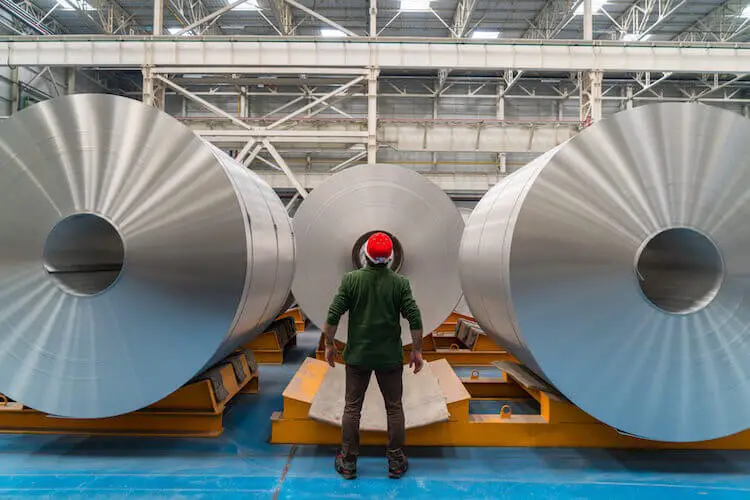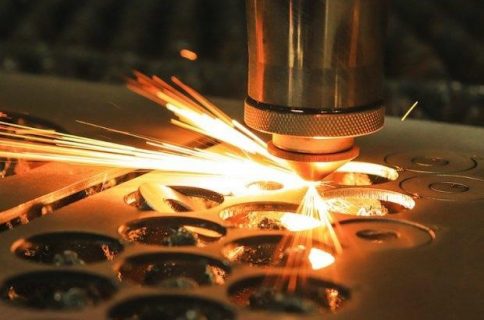Sheet metal, as used by many industries and fabricated by skilled sheet metal workers, is more or less what it says on the tin—a flat, thin sheet of metal. And as far as metal goes, sheet metal is a rather versatile form and is regularly utilized for many metalworking processes. In fact, sheet metal can be shaped to form everything from giant structural components and automotive parts to everyday objects like benches, for example.
Nevertheless, unlike other manufacturing methods, sheet metal fabrication comprises numerous different processes that manipulate the sheet metal in various ways. These different processes may involve shaping the sheet metal, cutting it, or joining two or more pieces of it together. If you want to know more about the sheet metal fabrication process, please continue reading as below we’ll take a look at the leading sheet metal fabrication techniques, explain how they work, and what they are used for.
What Is Sheet Metal Fabrication?
In a few words, sheet metal fabrication is the process of cutting, bending, and/or punching sheet metal material to form it into a functional part. To make the explanation of sheet metal fabrication easier for you, we can simplify the basic process into three main steps. First, a 3D model of the part design is created using CAD software. The second step is to convert the CAD file into a machine code and set up the machine for production. Lastly, the machine follows the code and precisely forms the sheet metal material into the desired shape using one or a combination of the aforementioned fabrication processes.
All parts from one batch get manufactured from a single piece of sheet metal so that all designs have a uniform thickness. The sheet metal workpieces come in a thickness range from 0.5 mm – 6 mm, as anything thicker than 6 mm is considered a metal plate. All parts manufactured using sheet metal fabrication, like metal brackets, for example, are known for their longevity and scale from one-off prototypes to high-volume production.
Sheet Metal Fabrication Techniques
In order to completely understand the formation of different parts using sheet metal fabrication, it’s critical to know the various types of fabrication techniques used in the process. These techniques help to transform flat sheets of metal into 3D functional components. Below you can read about the most common sheet metal processing methods.
Cutting
Cutting is usually the initial step in the sheet metal fabrication process. As the name suggests, it comprises of cutting the metal sheet material, or, in other words, when manufacturers begin the process with a rectangular metal sheet, based on the part’s design, the material is cut to size. There are different ways of cutting sheet metals.
For example, cutting sheet metal material is possible using shear, which uses shear forces to cut through the material. The other options for cutting sheet metal with a shear include punching and blanking. Conversely, manufacturers also carry out cutting without a shear, thanks to cutting techniques like laser cutting. This is ideal for industrial projects requiring precision cutting and faster lead times.
Stamping
Stamping is a cold-forming method for fabricating sheet metal material that transforms the flat metal workpiece into various shapes. This method utilizes a tool and a die, which, when impacted, change the form of the workpiece through the use of shear pressure. It also includes flanging, which involves swiping the metal sheet in such a way as to form flanges.
Bending
Bending is another crucial technique in the sheet metal fabrication ecosystem. As the name implies, it involves bending the metal sheets using rolling machines, press brakes, and other bending equipment.
Notwithstanding how simple bending may seem to the untrained eye, bending is a complicated fabrication process that demands a highly skilled operator to carry out the work. This is because of the occurrence of the so-called “spring back,” which is the term for when metal tries to regain its original flat structure after bending. To overcome this issue, operators need to overbend the part, so its spring-back angle is the desired angle.
Punching
Punching is a fabrication method utilized to create holes in the sheet metal material. This technique relies on a punch and die as these tools use shear force to perforate holes into the metal workpiece. Afterward, the die collects the scrap material created from the hole. Punching can also be used to create an indentation in the sheet metal material.
Final Thoughts
The bottom line is that Sheet Metal Fabrication Techniques is a science and an art. Now that you know its extensive range of techniques and how it can help your manufacturing operation, don’t hesitate to contact a renowned professional in the industry and let them take care of your desired project.

